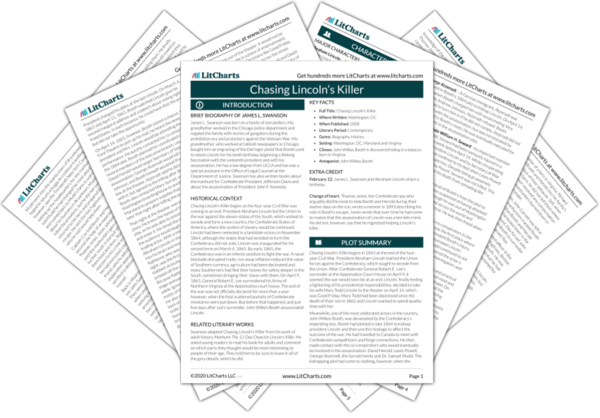Previous
Chapter 8
|
Previous
Chapter 8
|
Chasing Lincoln’s Killer: Chapter 9 Summary & Analysis |
Next
Chapter 10
|


Upgrade to unlock the analysis and theme tracking for all of Chasing Lincoln’s KillerChasing Lincoln’s Killer!
Get LitCharts A+